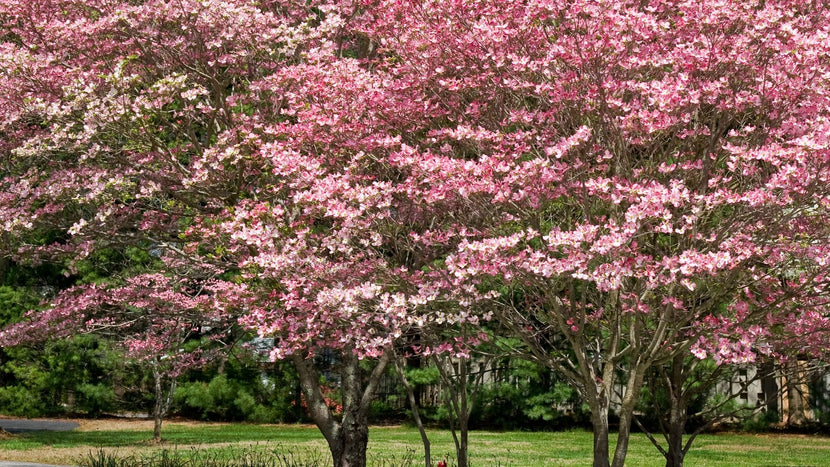Planting Dogwood Trees in the Garden
Plant Guide

There are dogwood trees and shrubs, and both types have specific cultural requirements. The information presented below is specific to Dogwood Trees.
Different types of Dogwood Trees
Cornus Florida:
This dogwood tree is native to the eastern half of the United States from Maine to Florida and west to Texas. It can be seen growing as an understory tree in the forests. Being a natural understory tree means that it does prefer to grow in partially shaded areas under the shade created by larger trees such as oaks and maples.
They are slower-growing trees and can typically reach 15 to 20 feet tall in the landscape. They also prefer slightly moist, but well-drained soils but will grow in slightly drier areas. Trees planted in the ideal location produce far more flowers than those trees in full sun.
Cornus Florida is an early spring-flowering tree and typically overlaps with the tail end of the Redbuds bloom season. The showiest times of the year for this dogwood are in the spring (Flowers) and the fall and early winter. In the fall, the leaves of this dogwood turn a burgundy-red color that rivals any other tree for brilliance. The bright red berries steal the show in the late fall and winter.
The native dogwood berries are a favorite food source of birds and small mammals and provide a nutritious meal in the winter.
Cornus Kousa or Kousa Dogwood:
This dogwood is native to East Asia, including Korea, China, and Japan. The flowers appear later in the spring than our native dogwood tree and are somewhat smaller. The kousa dogwood is slightly more drought tolerant than the Cornus Florida, so it is best suited for drier parts of the lawn.
Kousa Dogwood is suitable for gardeners as far north as Zone 4. It is more sun tolerant than Cornus Florida and can be planted as a specimen tree in full sun. The Kousa Dogwood is also hardier than our native dogwood and is considered a better choice for northern gardeners looking for a dogwood tree.
This dogwood produces much larger berries that are edible by not only the wildlife but also humans. Cornus Kousa leaves take on a crimson red color before dropping to expose the plump red berries in the fall. Kousa dogwoods are typically grown as multi-stemmed trees and take up more space at the bottom than Cornus Florida.
Choosing the ideal location for Dogwood Trees
Cornus Florida: Choose a location that is protected from the hot afternoon sun. Morning sun or evening sun is preferred. Areas under larger trees are perfect for the American flowering dogwood. Look for sites where the soil stays consistently moist and not dry for extended periods.
Typically areas under larger trees retain moisture and don't try out too fast because of the shade.
Cornus Kousa: Kousa Dogwoods are best suited for full sun locations. Trees grown in full sun produce the most flowers and develop the best fall color. Again choose a location where the soil moisture levels stay constant, but Kousa dogwoods will survive in areas that remain dry for short periods.
Ground Rules
Water
Like all newly planted trees, Dogwood trees will need to be watered for the first few months after planting. For the first 4 to 6 weeks after planting, it is recommended to water your flowering dogwood tree at least twice per week and more often if planted during the hot summer months.
Watering is the most critical thing to be mindful of to grow a healthy tree. During the first year of the tree's life, care will pay dividends on your way to having a healthy, established dogwood. If you're concerned about watering correctly, we recommend using a Treegator watering bag.
Watering bags are filled with the hose and allow water to gently seep into the soil surrounding your tree over some time. This provides a deep watering that will reach the roots at the bottom of the newly planted root ball.
Mulch the base of the tree with a layer of shredded hardwood mulch. This helps keep the sun from drying out the soil around the tree and also helps to keep the root-zone cool.
